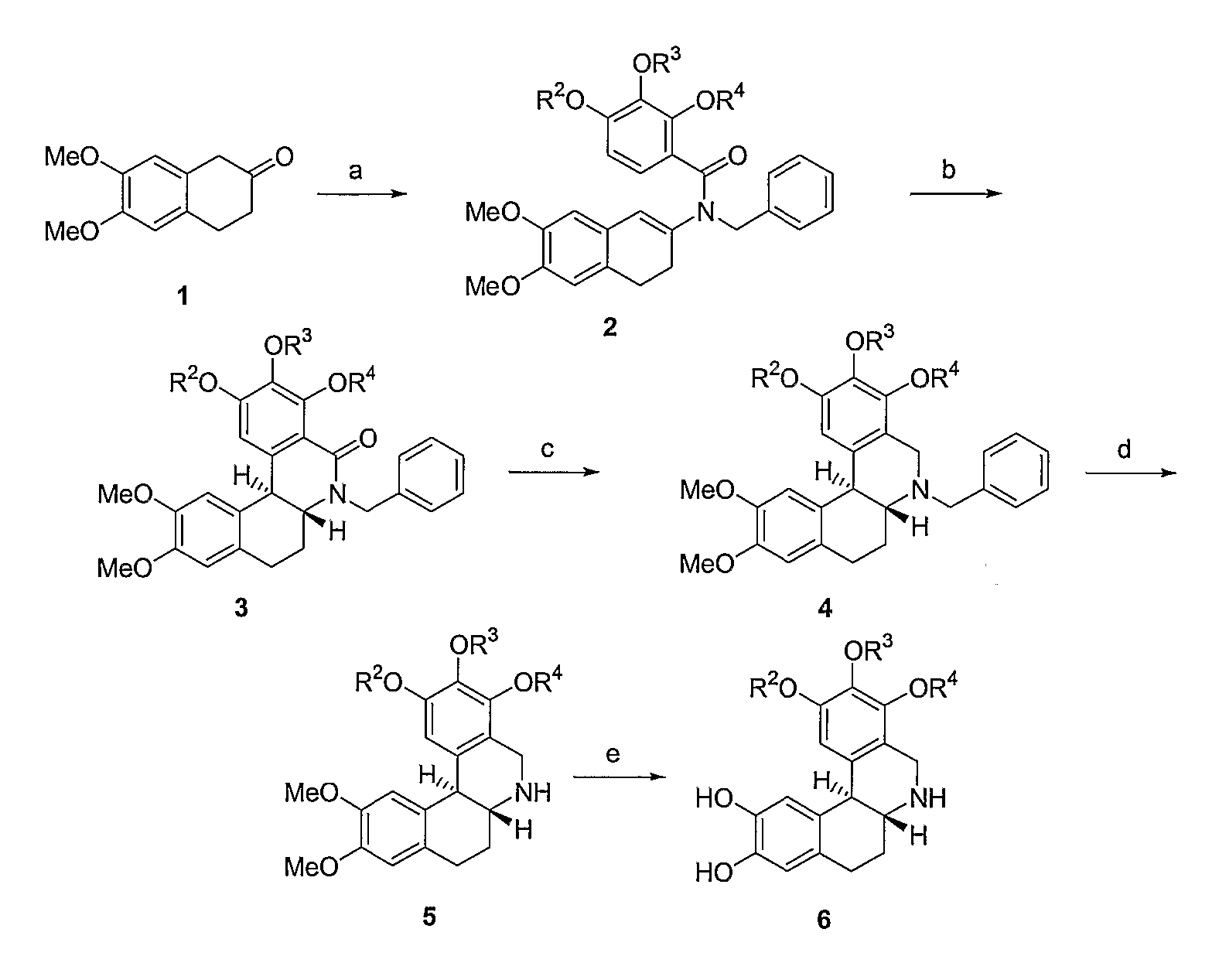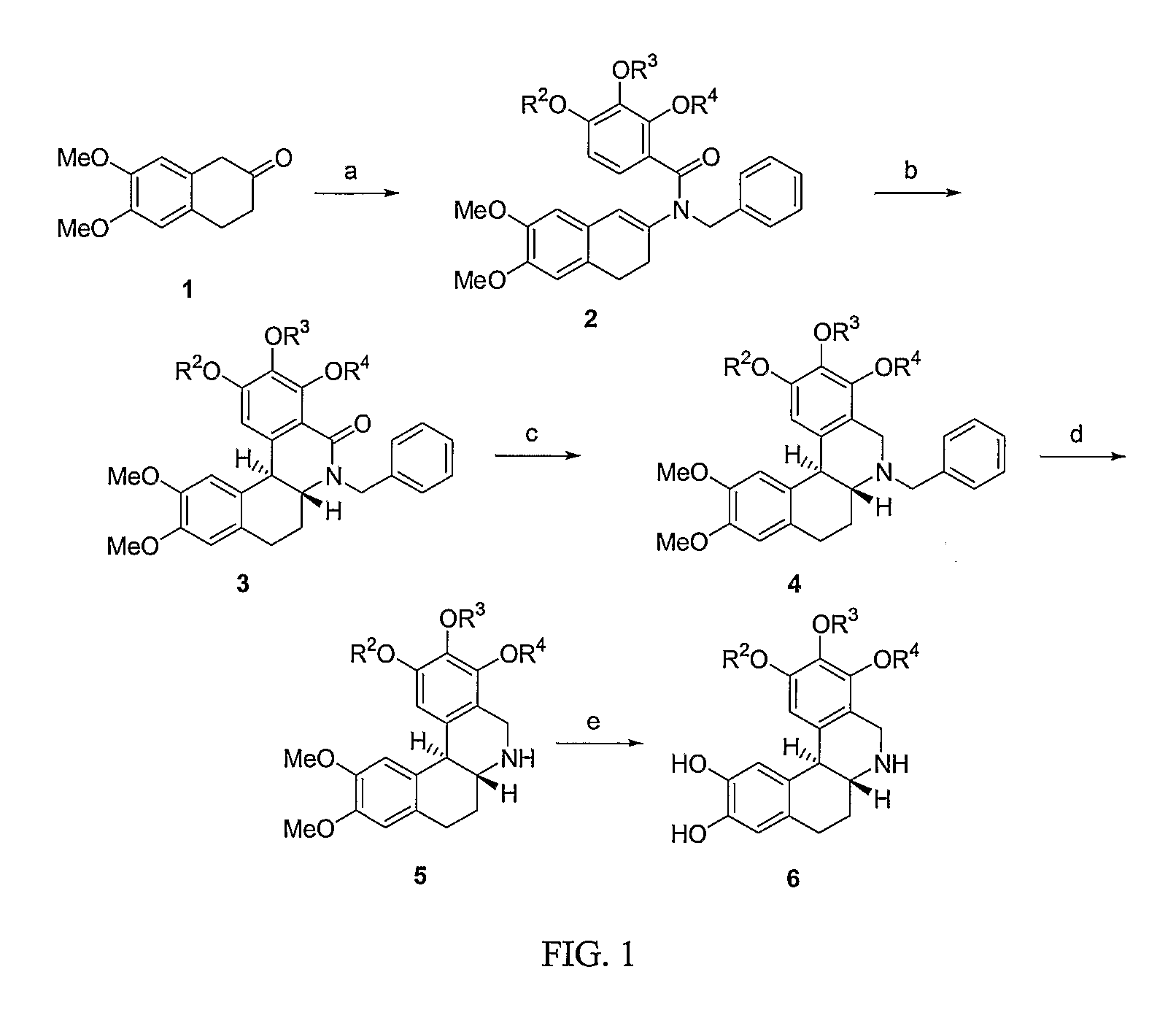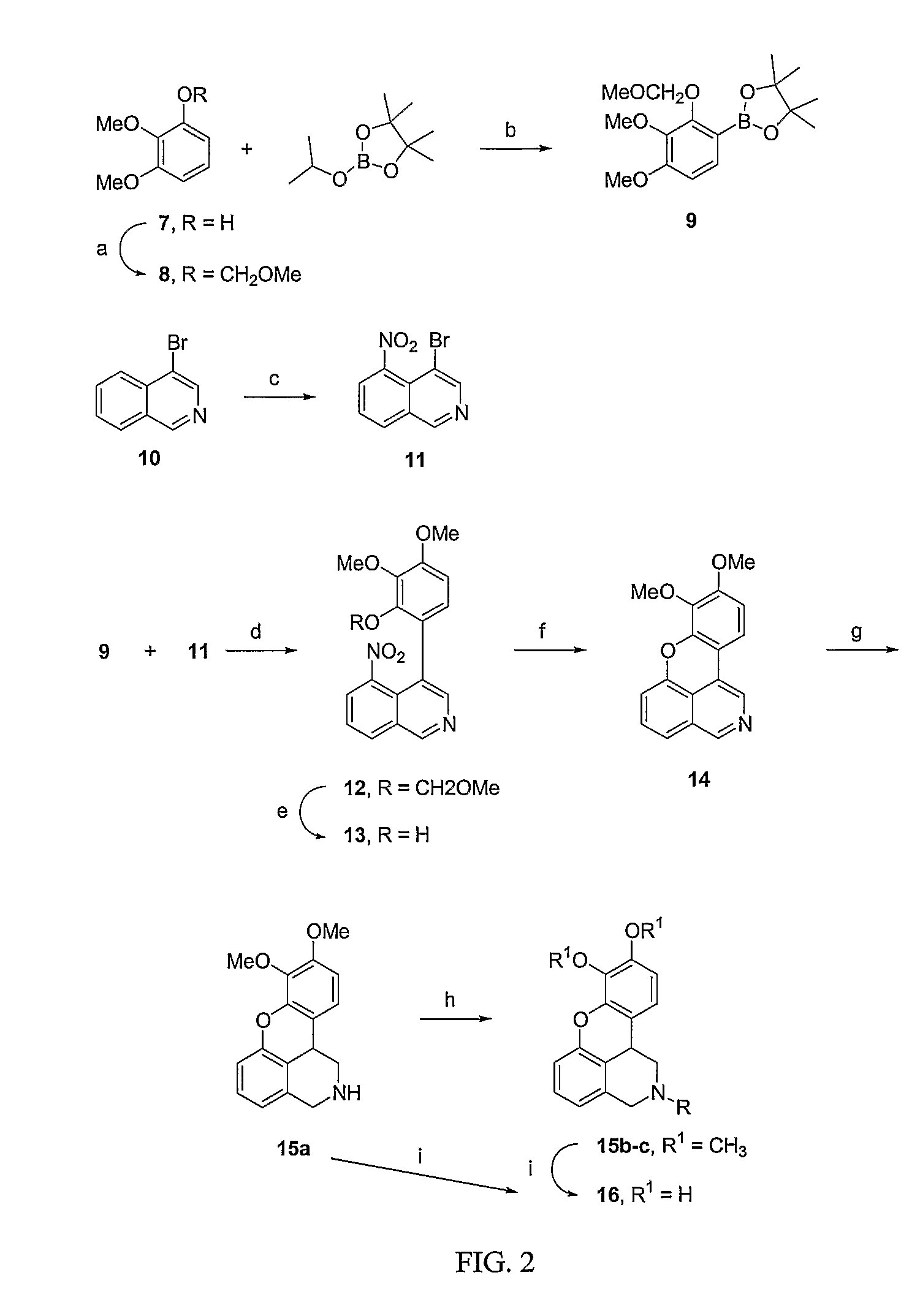Method of Administration of Dopamine Receptor Agonists
a dopamine receptor and agonist technology, applied in the direction of biocide, heterocyclic compound active ingredients, dispersed delivery, etc., can solve the problems of infrequent but devastating pandemics, significant increase in the duration, severity and mortality rates of underlying diseases, and increase in the frequency of deaths, so as to prevent hypoxia, prevent additional bacterial overgrowth, and remove safe and effective
- Summary
- Abstract
- Description
- Claims
- Application Information
AI Technical Summary
Benefits of technology
Problems solved by technology
Method used
Image
Examples
example 9
Preparation of 2-methyl-2,3-dihydro-4(1H)-isoquinolone (20)
[0139] Ethyl 2-bromomethylbenzoate (18). A solution of ethyl 2-toluate (17, 41.2 g, 0.25 mole) in carbon tetrachloride (200 mL) was added dropwise to a stirring mixture of benzoyl peroxide (100 mg), carbon tetrachloride (200 mL), and NBS (44.5 g, 0.25 mole) at 0° C. The mixture was heated at reflux for 3.5 hr under nitrogen, and allowed to cool to room temperature overnight. The precipitated succinimide was removed by filtration and the filter cake was washed with carbon tetrachloride. The combined filtrates were washed successively with 2 N NaOH (100 mL), and water (2×100 mL), and the solution was dried over anhydrous MgSO4, filtered (Celite), and evaporated under vacuum to yield an oil. Drying under high vacuum overnight afforded 60.5 g (99%) of compound 18: 1H NMR of the product showed the presence of ca. 15% of unreacted 17. The mixture was used in the next step without further purification: 1H NMR (CDCl3) δ 1.43 (t, J=...
example 10
Dinapsoline (29)
[0142] 2′,3′-Dihydro-4,5-dimethoxy-2′-methylspiro[isobenzofuran-1(3H),4′(1′H)-isoquinoline]-3-one (22). To a solution of 2,3-dimethoxy-N′-diethylbenzamide (21, 14.94 g, 63 mmol) in ether (1400 mL) at −78° C. under nitrogen was added sequentially, dropwise, N,N,N′,N′-tetramethylenediamine (TMEDA, 9.45 mL, 63 mmol), and sec-butyllithium (53.3 mL, 69 mmol, 1.3 M solution in hexane). After 1 hr, freshly distilled compound 20 (10.1 g, 62.7 mmol) was added to the heterogenous mixture. The cooling bath was removed and the reaction mixture was allowed to warm to room temperature over 9 hr. Saturated NH4Cl solution (400 mL) was then added and the mixture was stirred for 15 min. The ether layer was separated and the water layer was extracted with dichloromethane (4×100 mL). The organic layers were combined, dried (MgSO4), and evaporated to a brown oil. The oil was dissolved in toluene (500 mL), and heated at reflux for 8 hr with 3.0 g of p-toluene sulfonic acid, cooled, and c...
example 11
(R)-(+)-8,9-Dihydroxy-2,3,7,11b-tetrahydro-1H-napth[1,2,3-de]isoquinoline
[0150] 5-Bromoisoquinoline. The apparatus was a 500 mL three-necked flask equipped with a condenser, dropping funnel, and a stirrer terminating in a stiff, crescent-shaped Teflon polytetrafluroethylene paddle. To the isoquinoline (57.6 g, 447 mmol) in the flask was added AlCl3 (123 g, 920 mmol). The mixture was heated to 75-85° C. Bromine (48.0 g, 300 mmol) was added using a dropping funnel over a period of 4 hours. The resulting mixture was stirred for one hour at 75° C. The almost black mixture was poured into vigorously hand-stirred cracked ice. The cold mixture was treated with sodium hydroxide solution (10 N) to dissolve all the aluminum salts as sodium aluminate and the oily layer was extracted with ether. After being dried with Na2SO4 and concentrated, the ether extract was distilled at about 0.3 mm. A white solid (16.3 g, 78 mmol) from a fraction of about 125° C. was obtained (26% yield). The product w...
PUM
| Property | Measurement | Unit |
|---|---|---|
| particle size | aaaaa | aaaaa |
| diameters | aaaaa | aaaaa |
| temperature | aaaaa | aaaaa |
Abstract
Description
Claims
Application Information
 Login to View More
Login to View More - R&D
- Intellectual Property
- Life Sciences
- Materials
- Tech Scout
- Unparalleled Data Quality
- Higher Quality Content
- 60% Fewer Hallucinations
Browse by: Latest US Patents, China's latest patents, Technical Efficacy Thesaurus, Application Domain, Technology Topic, Popular Technical Reports.
© 2025 PatSnap. All rights reserved.Legal|Privacy policy|Modern Slavery Act Transparency Statement|Sitemap|About US| Contact US: help@patsnap.com



